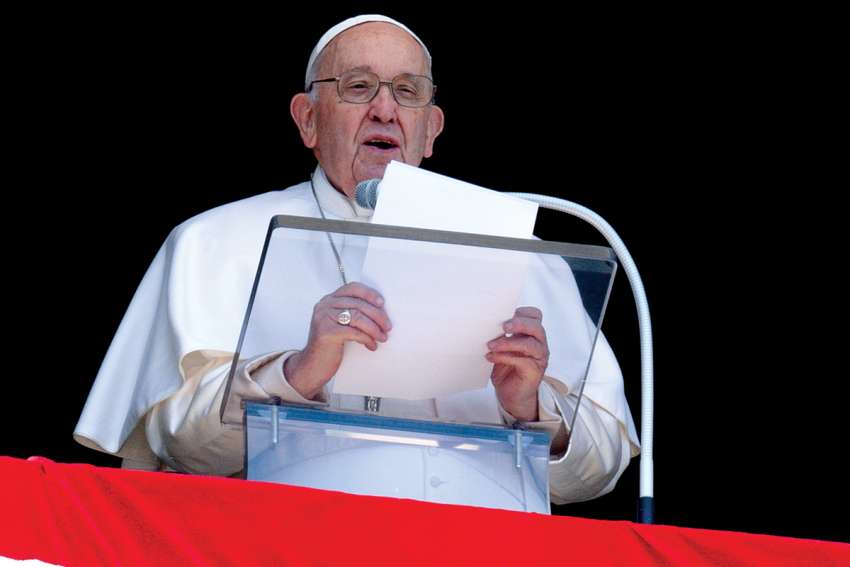On one of these occasions our small group was shown the door to the Room of Tears, which sits beneath Michelangelo’s famed The Last Judgement mural. It is the room that a new pope is taken into immediately after the papal conclave, so named because many have sobbed when the implications of the election sinks in. Inside this astonishingly simple room two clothing racks are brought in, one containing the white chasubles of all shapes and sizes, because no one knows in advance what the chosen pope’s body size will be; and another a more ornate rack of gowns that fit over the simpler garment.
The priest who showed us the room told us, “On the evening of March 13, 2013, when Jorge Mario Bergoglio was taken into this room, he put on the white chasuble. When we brought him to the other rack, however, he said he wouldn’t wear the more ornate robes. ‘But Holy Father, someone must wear the robe’ we said, to which he replied, ‘Well one of you decide who will wear it because I’m going out like this.’ He then famously appeared to the assembled masses robed simply in white. His first words were not to bless the assembled but rather to ask for our blessings, that he may walk the good path, that he might lead us faithfully in Christ.”
These simple, albeit monumental, changes in protocol mark an exceptional and revolutionary approach to the papacy, one that has not been without criticism and controversy, but a change that has helped to open the faith to the world in a different way. Pope Francis has placed the emphasis on “a poor Church for the poor,” and eschewed many of the more traditional trappings of what is surely one of the most influential offices on the planet. He refused to live in the papal palace, paid his own hotel bill and opened some of the most prestigious spaces so that the homeless could sit and dine in comfort.
He met with migrants in Lampedusa at a time when Italy felt under siege with refugees, reminding us that charity must be served when it is needed, not when it’s convenient. His encyclicals advocate for care and generosity, for our fellow citizens, for our environment and for the common good. He has travelled to some of the most troubled spaces on the planet, often while suffering immense personal pain, including a ground-breaking visit to Canada to issue a long-awaited papal apology to Indigenous peoples on Canadian soil.
It is precisely this complex legacy that the Centre for Christian Engagement at St. Mark’s College will be exploring to celebrate the pontiff’s 10th anniversary. Over 40 scholars and practitioners — lay, cleric and religious — will travel to Vancouver in May to explore Francis’ pontificate in a Canadian context. The centre will also launch its inaugural annual Laudato Si’ lecture, named after one of the Pope’s most cherished encyclicals, and delivered by renowned Church scholar Massimo Faggioli.
No pope leaves the world unchanged, but there can be little doubt that Pope Francis has approached the papacy in a unique way, reminding us that it is okay to question our beloved Church, to interrogate what we do well and reform what is needed, and to keep the spotlight on how we do the business of the Church. What he won’t accept is complacency. He is not content with convention for the sake of the past. Rather, like Christ Himself, he asks us to change for the better, to eschew self-interest for the common good, and to celebrate our common humanity. Indeed, he reminds us that there’s nothing common about it at all.
I was fortunate, on the last day of my recent visit, to be invited up to meet the Pope during his general address. To stand beside the pontiff overlooking St. Peter’s Square, looking out at tens of thousands of people, was to feel both incredibly tiny and immensely connected to a larger vision of faith and community. To know that this vision is deeply focused on the dignity of the individual — of all individuals — makes that community all the more meaningful to me. And, I hope, more engaging to the world at large.
(Turcotte is President and Vice-Chancellor at St. Mark’s and Corpus Christi College, University of British Columbia.)


